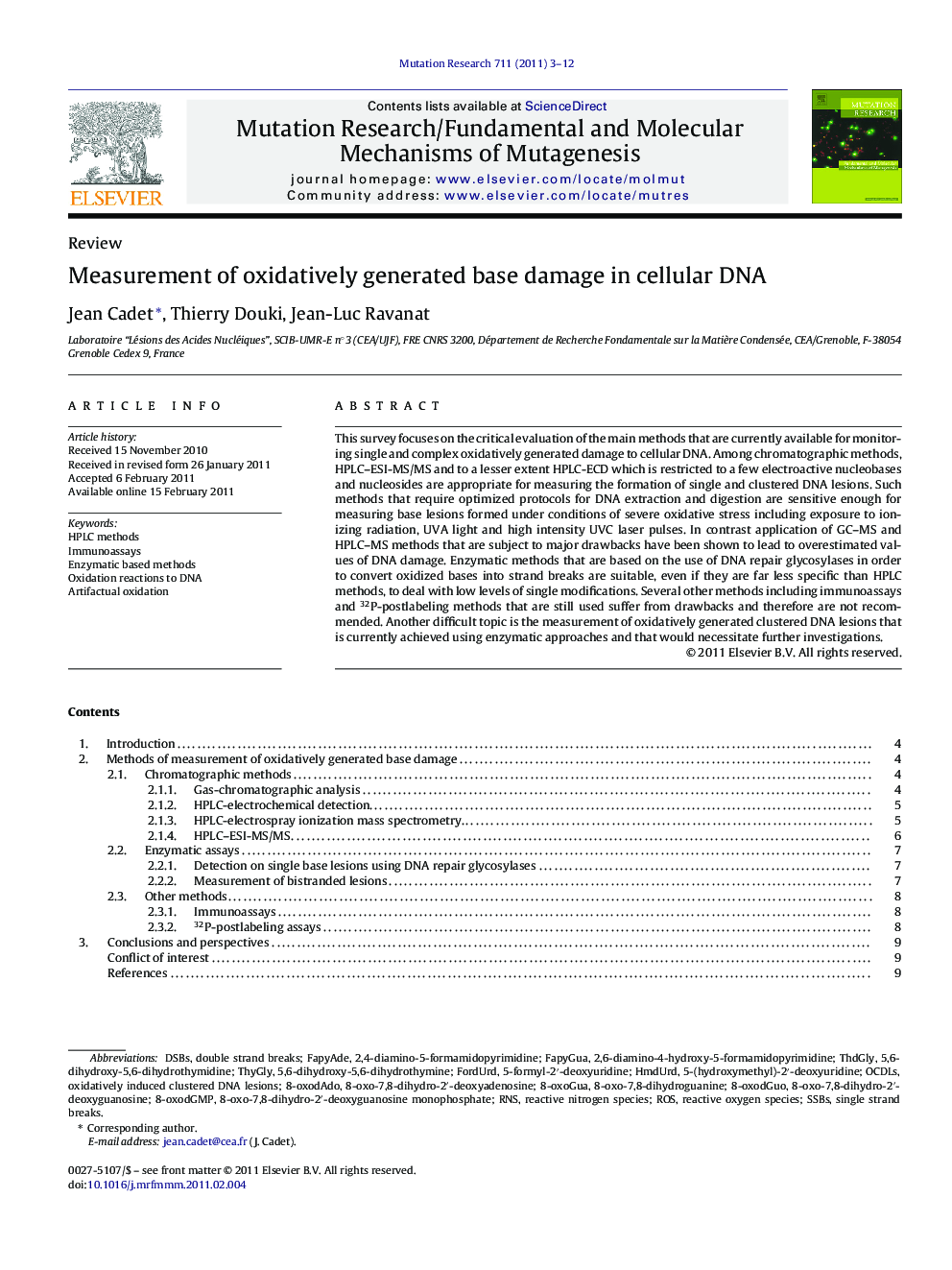| Article ID | Journal | Published Year | Pages | File Type |
|---|---|---|---|---|
| 8455979 | Mutation Research/Fundamental and Molecular Mechanisms of Mutagenesis | 2011 | 10 Pages |
Abstract
This survey focuses on the critical evaluation of the main methods that are currently available for monitoring single and complex oxidatively generated damage to cellular DNA. Among chromatographic methods, HPLC-ESI-MS/MS and to a lesser extent HPLC-ECD which is restricted to a few electroactive nucleobases and nucleosides are appropriate for measuring the formation of single and clustered DNA lesions. Such methods that require optimized protocols for DNA extraction and digestion are sensitive enough for measuring base lesions formed under conditions of severe oxidative stress including exposure to ionizing radiation, UVA light and high intensity UVC laser pulses. In contrast application of GC-MS and HPLC-MS methods that are subject to major drawbacks have been shown to lead to overestimated values of DNA damage. Enzymatic methods that are based on the use of DNA repair glycosylases in order to convert oxidized bases into strand breaks are suitable, even if they are far less specific than HPLC methods, to deal with low levels of single modifications. Several other methods including immunoassays and 32P-postlabeling methods that are still used suffer from drawbacks and therefore are not recommended. Another difficult topic is the measurement of oxidatively generated clustered DNA lesions that is currently achieved using enzymatic approaches and that would necessitate further investigations.
Keywords
Related Topics
Life Sciences
Biochemistry, Genetics and Molecular Biology
Cancer Research
Authors
Jean Cadet, Thierry Douki, Jean-Luc Ravanat,
